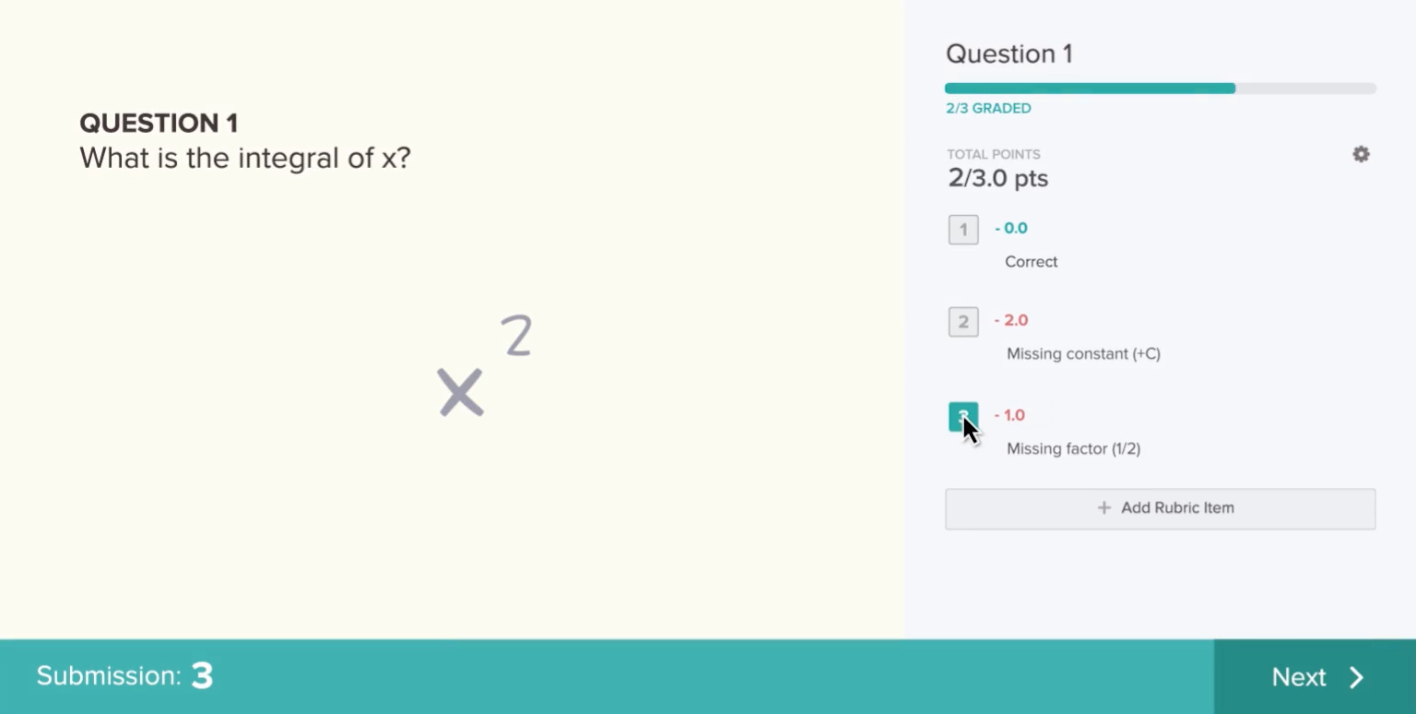Get to Know Gradescope

While grading can often be the most tedious aspect of teaching, it is also one of the most critical. Fair and accurate grading ensures that your students get credit for the lessons they have learned.
But what if you could lessen the tedium? What if there were a way to assign, grade and discuss coursework with your students all in one place? And what if you could standardize that process to rely on in the future?
With Gradescope, you can.
Gradescope is an online grading platform that helps you seamlessly administer and grade all of your assessments, whether online or in-person.
To get familiar with Gradescope, we consulted Teaching Associate Professor Lina Battestilli and Teaching Professor Anna Howard who both have been using the tool for years and have valuable experience to share with the NC State community.
Submitting assignments
Gradescope is not simply a grading tool –– it also solves many of the frustrations that instructors encounter when assigning students coursework. Gradescope supports several types of assessments, including exams/quizzes, homework/problem sets, bubble sheets and programming assignments. These assessments can be submitted digitally by the student or as a paper exam which instructors scan and upload to Gradescope.
If you are used to assigning and grading in Moodle, you’re in luck. Gradescope has a Moodle integration, so assignments and grades completed in one platform will directly transfer to the other. Students who work on group assignments can also submit their work collectively in Gradescope, and their scores will be shared individually to the Moodle gradebook.
Gradescope makes it easy to archive and organize assignments, allowing students to hold on to their homework to study with and keep it from getting lost in the shuffle of papers.
Grading assignments
Battestilli and Howard agree that Gradescope’s biggest impact on their teaching has been enhanced efficiency in grading.
Gradescope originated from the need to grade science and mathematics digitally, and NC State’s Department of Computer Science was instrumental in bringing the tool to the university. Ever since, it has grown to help NC State instructors and teaching assistants not only grade faster, but better.
“It bridges the gap between computerized grading and hand-drawn work,” says Howard. “I don’t have to handle paper anymore.”
By grading assignments in Gradescope, you have the option to input an existing rubric or create a new rubric to reuse in the future. Every rubric item offers the chance to provide students with targeted feedback in just a couple of clicks.
“The rubrics are easy to create and very flexible. You can create rubrics as you grade, and then when you grade the next assignment the rubric is there. The students get a very nice report of their grades and a detailed rubric of where they lost points,” Battestilli says.

Gradescope also provides simple access to teaching assistants (TAs) who help with grading with role designation such as reader, instructor and TA. Instructors can tell their TAs which portions of the assessment to grade and view their progress via a dashboard which updates by question and shows who is grading. Assigning TAs individual questions instead of full assignments is a helpful way to enhance consistency and equity in grading.
Sometimes, a student may not agree with the grade they receive. Fortunately, re-grading requests are simplified in Gradescope. If a student would like to appeal the score they received on a question or assignment, all they have to do is click “Request Regrade,” and an email will be sent to the instructor or TA who graded that section, who can then resolve the issue themselves or ask for guidance. Graders can also send updates to students from Gradescope, alerting them to a new assignment or letting them know that grades are posted.
Tracking Progress
Just as students receive helpful feedback through Gradescope, so do instructors. The platform generates detailed analytics about assignments and their individual questions. Graders can view which students answered questions in certain ways, creating opportunities to refine assessments or keep an eye on academic integrity.
Instructors may also tag questions and assignments by topic or learning objective to better gauge how the coursework is contributing to their educational goals. These statistics can be exported to an archive for future courses or to share for class reflection.

Impact and Advice
Battestilli and Howard are consistently impressed by Gradescope’s impact on their teaching and their students. Howard uses Gradescope in her large-enrollment course, and Battestilli plans to do the same. Right now, Battestilli uses Gradescope for her third-year elective course with around 60 students.
“It’s fantastic. It’s easy to adopt, and students have an easy time with it,” Howard says. Both Battestilli and Howard report no complaints from their students.
Battestilli was initially reluctant to add the step of scanning paper exams and uploading them into Gradescope, but after giving it a shot, she and her TAs realized that it made the rest of the grading process much simpler. She recommends testing out Gradescope’s features to find which are best for you.
“Don’t get overwhelmed by all of the different features available. Start slow and add on over time if that works better for you,” she says.
If you’re interested in using Gradescope, DELTA has plenty of resources to help you get started. Sign up for a DELTA workshop, watch a pre-recorded webinar (password g@Nn0TeL), explore our Knowledge Base article or contact DELTA LearnTech at learntech@ncsu.edu with specific questions.


